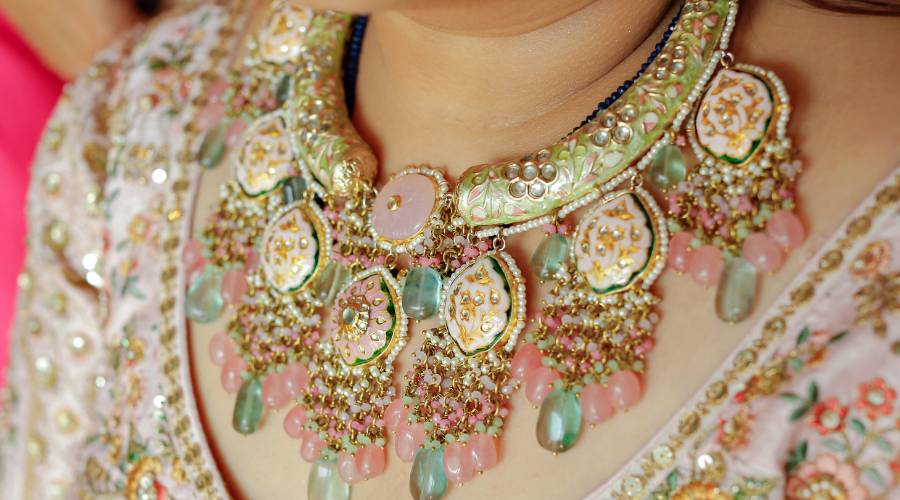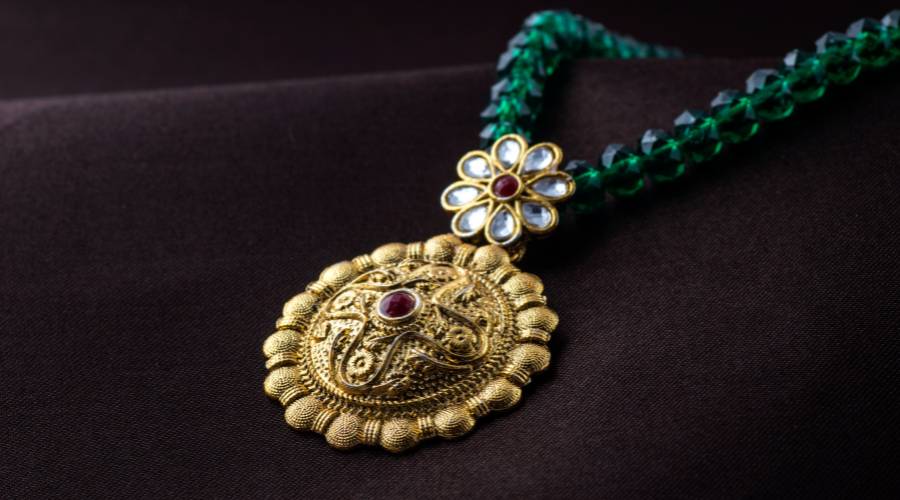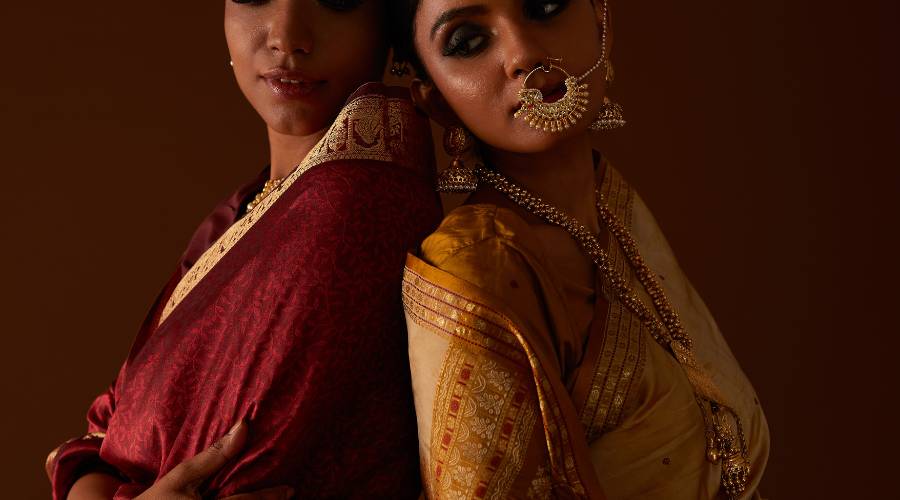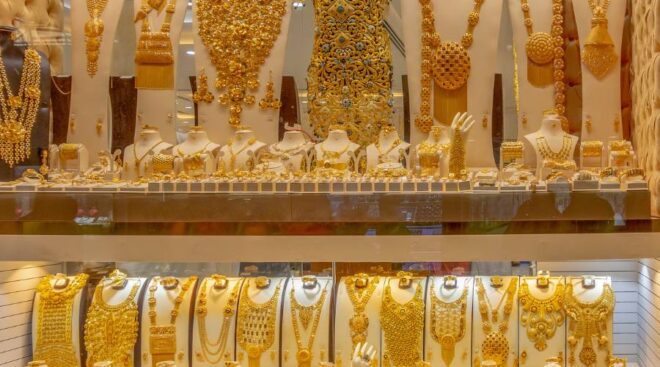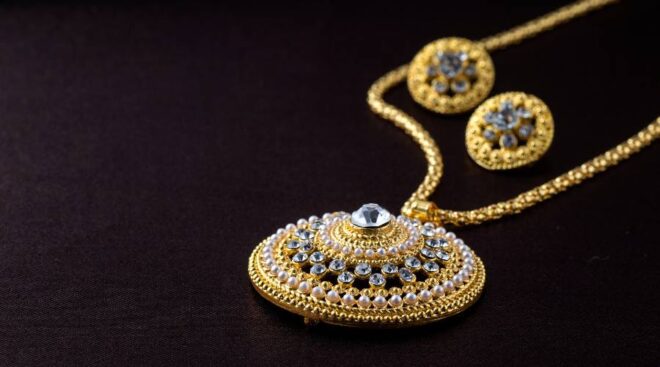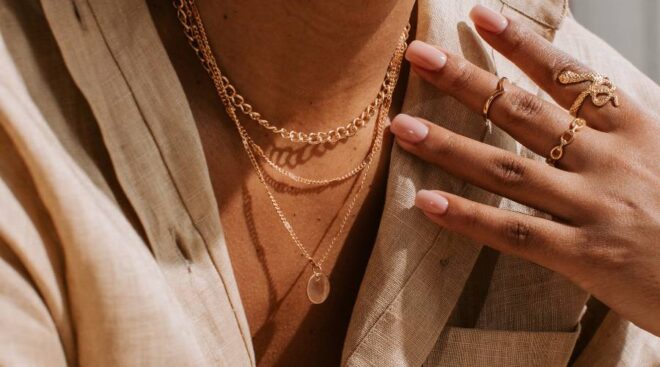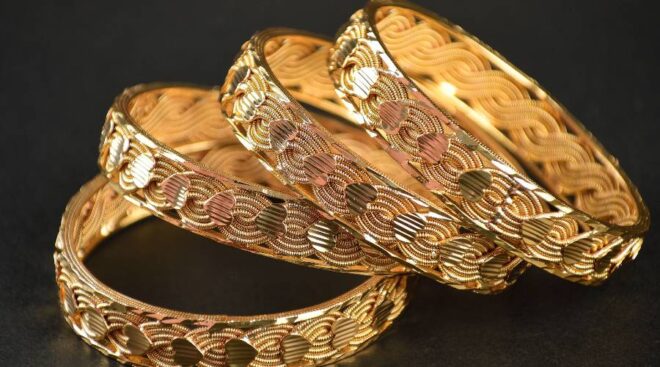Indian jewellery trends are a vibrant mix of traditional and modern styles, showcasing a wide range of designs and skilled craftsmanship. Traditional jewellery, deeply rooted in Indian culture, has an everlasting charm. However, with the changing times, modern interpretations are emerging that appeal to current preferences.
Reviving traditional designs in today’s world is not just about preserving history; it is an artistic endeavour to blend the past’s elegance with present-day sophistication. In this article, we will explore:
- The intricacies of traditional styles such as Kundan and Polki
- Their cultural significance
- How these timeless pieces are being reimagined for today’s audience
We will also discuss the evolution of Indian jewellery, starting from its historical origins to the latest innovations. Additionally, we will delve into sustainable practices and the combination of vintage charm with contemporary aesthetics. Join us on this journey as we uncover how these factors come together to create a distinctive and evocative personal expression.
The Rich Heritage of Indian Jewellery
Indian jewellery has long been celebrated for its rich cultural heritage, intricate designs, and profound symbolism. Each piece tells a story, reflecting centuries of tradition and craftsmanship. Among the most revered styles is Kundan and Polki jewellery, often considered the epitome of heritage jewellery.
Kundan and Polki: A Closer Look
Characteristics of Kundan and Polki Styles
Kundan jewellery is renowned for its elaborate setting style that involves embedding gemstones into a gold foil base. This technique gives the pieces their distinctive gleam and intricate appearance. On the other hand, Polki jewellery features uncut diamonds that retain their natural brilliance and raw charm. Both styles stand as testaments to India’s age-old tradition of creating breathtakingly beautiful vintage pieces.
- Kundan Jewellery
- Known for its refined elegance.
- Often incorporates colourful gemstones such as rubies, emeralds, and sapphires.
- Typically features intricate patterns with floral or geometric motifs.
- Polki Jewellery
- Utilises uncut diamonds in their natural form.
- Emphasises simplicity and elegance through minimalistic settings.
- Showcases a rustic yet luxurious aesthetic.
Craftsmanship Involved in Creating These Pieces
Creating Kundan and Polki jewellery requires meticulous craftsmanship passed down through generations. Artisans employ traditional techniques that demand precision and patience:
- Kundan Crafting Process
- The base is first designed using gold foil.
- Gemstones are carefully set into the foil, ensuring secure placement without adhesive.
- Final polishing enhances the lustre and showcases detailed artistry.
- Polki Crafting Process
- Diamonds are handpicked to match size and quality.
- Each stone is set using traditional jadau techniques, requiring skillful hands.
- The final piece undergoes a thorough inspection to ensure perfection.
The dedication to preserving these ancient crafts highlights not just artistic skill but also a deep respect for cultural heritage.
Cultural Relevance and Occasions for Wearing Them
Kundan and Polki jewellery hold immense cultural significance in India. Traditionally worn during significant life events, these pieces are more than mere accessories—they are symbols of prosperity, status, and spiritual beliefs:
- Weddings: Brides often adorn themselves with Kundan or Polki sets as part of their bridal ensemble. These pieces elevate traditional attire, adding a touch of opulence to ceremonial occasions.
- Festivals: During festivals like Diwali or Durga Puja, women choose these styles to complement festive attire while paying homage to age-old traditions.
- Cultural Ceremonies: From engagements to anniversaries, wearing Kundan or Polki signifies reverence for one’s roots while embracing moments of joy with timeless elegance.
As modern designers continue to draw inspiration from these traditional styles, Kundan and Polki remain at the forefront of luxury collections worldwide. Their enduring appeal lies not only in their visual splendour but also in their ability to connect us with our ancestral past—a testament to India’s unrivalled legacy in jewellery artistry.
Temple Jewellery: A Divine Connection
Temple jewellery, an essential part of India’s cultural heritage, has its roots in the Chola dynasty. Originally made to decorate gods and goddesses in temples, these elaborate pieces have now become a beloved type of heritage jewellery. With their intricate designs and use of precious metals like gold, they represent a rich history.
Symbolism and Design
- Temple jewellery motifs are steeped in symbolism, often depicting Hindu deities like Lakshmi, Ganesha, and Saraswati.
- The sacred significance of these motifs extends beyond aesthetics, serving as a spiritual emblem for the wearer.
- Common materials include gold and silver, often embellished with precious stones like rubies and emeralds.
Popularity in Bridal Sets
Temple jewellery’s vintage charm makes it a popular choice for bridal collections. Many brides choose these pieces to add a touch of timeless beauty and divine blessing to their look.
While Kundan and Polki jewellery are other traditional styles that continue to mesmerise with their craftsmanship, temple jewellery stands out by blending cultural heritage with modern appeal. This combination not only keeps its historical essence alive but also fits in with current Indian jewellery trends.
Transition to Modern Jewellery Trends
The world of jewellery design is going through an exciting change, with traditional styles gracefully evolving into modern looks. The demand for minimalistic designs and pieces suited for everyday wear is reshaping the industry. This transformation reflects changing societal trends and the growing need for versatility.
Shift from Traditional to Contemporary Styles
1. Working Women and Practicality
As more women join the workforce, there’s a noticeable influence on jewellery preferences. Traditional heavy pieces are giving way to more practical choices that complement professional attire yet retain elegance.
2. Versatile Pieces for Daily Use
The trend leans towards jewellery that can transition seamlessly from day to night. This rise of practical and versatile pieces caters to those who seek both functionality and style, without compromising on the essence of luxury.
Fusion of Traditional and Contemporary Elements
Designers today are skillfully combining traditional craftsmanship with modern design ideas. This blend creates unique collections that represent both heritage and innovation.
1. Incorporating Traditional Elements
Many modern designers are infusing classic motifs, like the intricate detailing found in Kundan or Polki, into contemporary silhouettes. For example, a traditional jhumka paired with minimalist gold hoops creates an intriguing contrast.
2. Appeal to Younger Generations
Younger audiences are drawn to these hybrid designs that offer a fresh take on tradition. The allure lies in their uniqueness—pieces that tell a story but fit into modern wardrobes with ease.
The jewellery industry continues to embrace change while honouring its rich past, offering endless possibilities for personal expression through both old and new styles.
Sustainability in the Jewellery Industry
More and more consumers and designers are prioritising sustainability in the jewellery industry. This change is driven by a greater understanding of environmental impacts and a demand for responsible sourcing. As a result, eco-friendly materials are becoming a fundamental part of modern jewellery production, aligning with global sustainability goals.
Innovative Materials
Innovations in this field include:
- Recycled metals
- Conflict-free gemstones
- Lab-grown diamonds
These materials not only reduce the ecological footprint but also offer unique opportunities for creativity. For instance, recycled gold retains its lustre while being an environmentally conscious choice.
Blending Tradition with Sustainability
Designers are exploring new ways to blend tradition with sustainable practices. The incorporation of responsible sourcing into traditional Indian jewellery trends is evident as artisans engage with ethical suppliers to procure raw materials. This approach helps maintain cultural authenticity while appealing to environmentally-minded consumers.
Eco-Friendly Production Processes
The emphasis on sustainability extends beyond materials. Many brands are adopting eco-friendly processes throughout their production lines, ensuring that energy consumption and waste generation are minimised. Such practices not only support environmental conservation but also enhance the appeal of modern jewellery to a conscientious audience.
The focus on sustainability is not just a trend but a significant movement shaping the future of Indian jewellery design.
Conclusion
Exploring the world of jewellery is like going on a personal journey of self-expression. Whether you are drawn to the charm of traditional styles with their rich cultural stories or the sleek elegance of modern designs, each piece has its tale to tell. Jewellery not only enhances your appearance but also reflects your individuality and heritage.
When you explore traditional Indian jewellery, you discover a wealth of designs that have endured over time. From the divine motifs in Temple jewellery to the intricate craftsmanship of Kundan and Polki styles, these pieces are filled with history and symbolism. They stand as a testament to India’s rich artistic legacy, offering a connection to cultural roots while gracing special occasions with elegance.
On the other hand, modern jewellery trends provide an opportunity for creativity, blending traditional elements with contemporary aesthetics. This fusion satisfies the changing preferences of younger generations who seek distinctive styles that resonate with their identity. Designers today skillfully incorporate heritage motifs into new collections, creating pieces that appeal to both tradition enthusiasts and fashion-forward individuals.
Sustainability is becoming an essential part of the jewellery industry, with consumers and designers increasingly prioritising eco-friendly practices. This shift towards sustainable production methods ensures that future generations can continue to enjoy beautiful jewellery without harming our planet’s health.
For those who wish to explore a combination of tradition and modernity, platforms like Aladdin’s Chest offer exquisite collections that capture this essence. These online platforms play a crucial role in promoting traditional craftsmanship by connecting artisans with a global audience. By shopping through such avenues, you not only discover timeless beauty but also support local artisans in reviving traditional crafts.
Sparkle with grace by exploring both old and new styles for personal expression. The journey through different eras of design can lead you to find pieces that deeply resonate with your sense of style and heritage. To start this journey, consider browsing the collections at Aladdin’s Chest where tradition meets contemporary elegance in perfect harmony.
Join the Jewellery Club for exclusive offers and insights into styling tips that help you express your unique personality through adornments. Subscribe now for 10% off your first order and redefine your style narrative through jewellery that embodies both timeless beauty and modern sophistication.
Conclusion
Exploring both old and new styles allows you to express your individuality through the timeless beauty of Indian jewellery. The cultural significance embedded in every piece offers a unique connection to heritage while embracing current trends. By blending tradition with modern sophistication, jewellery becomes not just an accessory, but a statement of personal style.
Aladdin’s Chest invites you to browse their exquisite collections, where tradition meets contemporary elegance. Discover impeccably crafted pieces suitable for all occasions:
- Elegant Earrings: From traditional jhumkas to modern statement studs.
- Necklace Sets: Featuring bridal necklaces, chokers, and layered designs.
- Exquisite Statement Jewellery: Perfect for weddings and celebrations.
Immerse yourself in a world where luxury and cultural depth converge, ensuring each piece resonates with both history and modern-day appeal.
What is the significance of traditional Indian jewellery in today’s world?
Traditional Indian jewellery holds immense cultural significance as it embodies intricate designs, craftsmanship, and symbolism that reflect India’s rich heritage. Reviving these designs in contemporary settings allows for a deeper appreciation of our history while promoting sustainable practices in jewellery making.
What are Kundan and Polki’s jewellery styles?
Kundan and Polki are renowned traditional Indian jewellery styles. Kundan involves setting gemstones in gold foil, resulting in a stunning and intricate look, while Polki features uncut diamonds that highlight the raw beauty of the stones. Both styles are celebrated for their craftsmanship and cultural relevance, often worn during weddings and auspicious occasions.
How has modern jewellery design evolved from traditional styles?
Modern jewellery design has evolved to incorporate minimalistic aesthetics and practicality, catering to the needs of today’s consumers, especially working women. This shift reflects a fusion of traditional elements with contemporary trends, allowing for versatile pieces suitable for everyday wear.
What role does sustainability play in the current jewellery industry?
Sustainability is increasingly becoming a priority within the jewellery industry. Designers and consumers alike are focusing on eco-friendly materials and responsible sourcing practices to reduce environmental impact. Innovations are being made to integrate sustainable methods into modern jewellery production, ensuring a greener future.
How can online platforms support traditional artisans?
Online platforms like Aladdin’s Chest play a crucial role in promoting traditional craftsmanship by providing artisans with access to a broader audience. These platforms facilitate the revival of heritage crafts while allowing consumers to discover exquisite collections that blend tradition with contemporary elegance.
What can I expect from exploring both traditional and modern Indian jewellery styles?
Exploring both traditional and modern Indian jewellery styles offers a unique opportunity for personal expression. You will encounter timeless pieces that reflect cultural significance alongside innovative designs that appeal to contemporary tastes. This blend encourages appreciation for India’s rich heritage while embracing evolving aesthetics.


